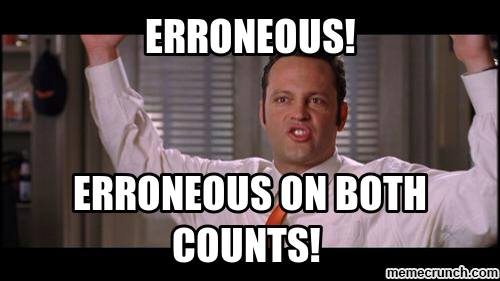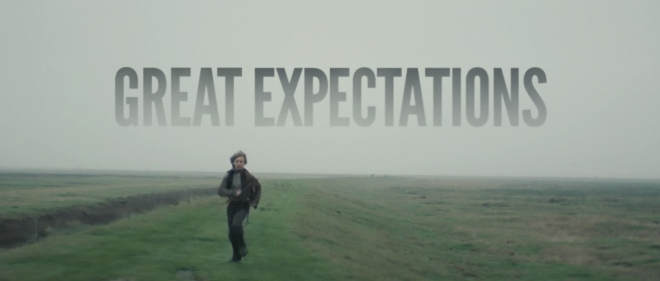 |
| Jeff Ostiguy VP, Digital Marketing |
Let’s play a little fundraising word association.
When I say, predictable, reliable, formulaic, you think?
Digital, right?
Of course you don’t. You think time-tested direct mail.
When I say digital you probably think, costly, unproven.
Well…

It’s true that we don’t have the same kind of return models developed for digital just yet but that doesn’t mean that you can’t go into a digital campaign without a set of expectations for your return on investment. The key is setting the right expectations.
More on that to come, but before we get to how… let’s talk a little about why investing in digital is important.
First and foremost, the digital fundraising landscape is shifting - constantly. Email is a mature channel and other platforms are starting to play increasingly important roles.
In M&R’s wonderful 2016 annual report they pointed out that email attributable revenue was up across the board some 25%, but most email engagement metrics (open, clicks CTR, etc.) are in fact, down.
How is this possible?
It’s simple really. There are more organizations competing for share of mind and share of wallet through more channels than ever before. Realistically, you can’t be everywhere of course, but you have to acknowledge that the path to conversion is not linear. Instead, people bounce back and forth between channels, looking for more than a picture and a call to action. They have high expectations for the organizations they support and the opinions of their peers shared and consumed through social platforms has tremendous sway.
Now, we could easily veer off into a conversation about content (I see a future Straight Talk post about content strategy), but for now, let’s put that aside as table stakes and focus more on how to be in the right place at the right time and feel good about your investment.

Six times.
That’s what the top 25 organizations in M&R’s report spend on digital per dollar raised online - $.12 to $.02.
Is all of that money raised directly from response to a display ad, or paid social post? No, not even close. But, those strategies – as well as your mail program - are having a direct impact on the performance of your email efforts by surrounding the donor as well as driving new donors and prospects into the pipeline for you to cultivate.
Quick aside, are you measuring site
traffic and organic gift trends around the time
a mail piece lands in mail boxes or
when an email deploys?
We are all getting better at our email programs. Segmentation is better, design is better, we’re learning the right cadence and messaging approaches to maximize the return from our best and most responsive donors.
But, those same donors are being bombarded with messages across channels. This bombardment isn’t just coming from other organizations. Your donors are no doubt receiving other communications from you as well and they don’t distinguish a newsletter, from an advocacy request, from an appeal. As this happens, your emails may start to get “tuned out” by an increasingly large percentage of your database. So, while you might be seeing solid returns from email in your current program, there are warning signs you should be paying attention to.
Is your active digital donor file getting smaller? Better retention and increasing average gifts are great, but they could be masking a bigger issue.
Have you noticed emails going to spam when they weren’t before? Are your open rates declining? These are symptoms of issues related to your sender reputation and if you keep sending to an increasingly disengaged donor, lapsed donor or prospect universe this could become a HUGE problem.
Bottom line, you have to diversify your channel approach and you must keep acquiring.

I love this cartoon. It’s such a great representation of where we are now.
Email isn’t “free”, but it’s a low cost way to reach younger, high value donors, and we are all really good at it, right?
Social is a fantastic “free” platform to tell everyone about the incredible work we’re doing and better still, our followers will tell everyone how amazing we are…FREE.
Right?
(wah-wah)
Nope.
The best email programs are those that are reinforcing the messaging of a multi-channel strategy and are written and delivered strategically to convert.
“Free” social no longer exists. The audience that sees your organic posts is getting smaller and smaller.
Google is making it harder and harder for an org to get into an inbox at all, let alone the “primary” folder. If you haven’t already, do a little research into the number of people on your file with Gmail accounts and how many of those people are never seeing your message.
They have also sunset Google Grants Pro and we can expect more changes to Grants in the future.
Ok, so we have discussed the whats, the whys, the challenges and the realities.
One absolute reality is that investing in digital is not just a critical part of your future, but a huge opportunity in the present. With so many options, many of them fairly low cost, take advantage of digital’s unique ability to allow you to test and learn - not just tactics and vendors, but messaging and creative.
Everybody loves a good list, so here are the top 8 things to consider as you gear up to invest in digital.
- Have An Attribution Model. No one clicks on banner ads, and if they do, it’s probably on a mobile device and it’s probably an accident. Odds are, the vast majority of the response will come from people who saw the ad, not those who clicked on it. There is no standard industry practice for view through conversion attribution. Some apply a blanket 20%, but we don’t find that to be appropriate. It’s more than fair to give significantly more credit to someone who converts within a day of seeing your ad…or an hour. 2, 3, 4 days, that’s where a 20% attribution is more fair, particularly if you account for other things in the market. Once you get outside of a week, you can think about giving that revenue back or attributing a much smaller %.
- Be Fair. Do you make money on direct mail acquisition? With the rare exception, we know the answer is no. So don’t expect to do so in digital. If anything, you’ll lose less money in digital and you will have significantly greater ability to adapt and test into what works. Not to mention the fact that we know that the donors you do acquire through digital are more valuable.
- Re: Google. Google is not so much a problem as it is a challenge that we have to acknowledge and accept. Like social, Google is increasingly becoming a pay-to-play platform. Google Grants is great, but limited. The $2 bid cap lets you keep the lights on from a discoverability standpoint but severely limits your ability to get aggressive on donor-centric terms or execute strategic conquesting. The same applies to social. To move the needle, you have to target your message and to target your message, you have to invest.
- Paid Search Matters… A Lot. See above. Search indicates intent. Get to the top of the consideration set if someone is signaling intent. Grants won’t get you there in competitive environments. Optimize your campaign mix between paid and Grants and a small paid investment can go a long way.
- Pay For Performance. If you want predictability, there are plenty of CPA based lead and donor gen opportunities that give you the ability to set your budget and get a return that you are comfortable investing in.
- Think Incrementally. Far too often, the answer to “how do we pay for digital acquisition?” is to move budget from another program. We get it, budgets are limited, but push for incremental funding for this work. Don’t rob Peter to pay Paul as they say. The best performing programs let channels support each other, don’t ask one to fund the other.
- Be ready. Once you acquire a lead or a donor, remember that the work doesn’t end there. If you bring someone on through a particular tactic or partner, be sure to a) onboard them deliberately and thoughtfully, don’t just drop them into the ongoing stream of appeals and b) have the infrastructure in place to measure their performance over time. This data will be critical in informing future investments.
That’s it. Easy right?
I’ll leave you with one final thought, #8.
Don’t. Stop.
The six most dangerous words in digital?
“We tried that, it didn’t work.”
It’s true, sometimes it won’t work, but you have to keep testing, keep learning and finding the right mix of tactics and partners for your audience.
We hope this helps! Questions, comments, or other things you’d like us to discuss in Straight Talk, send us a note.







